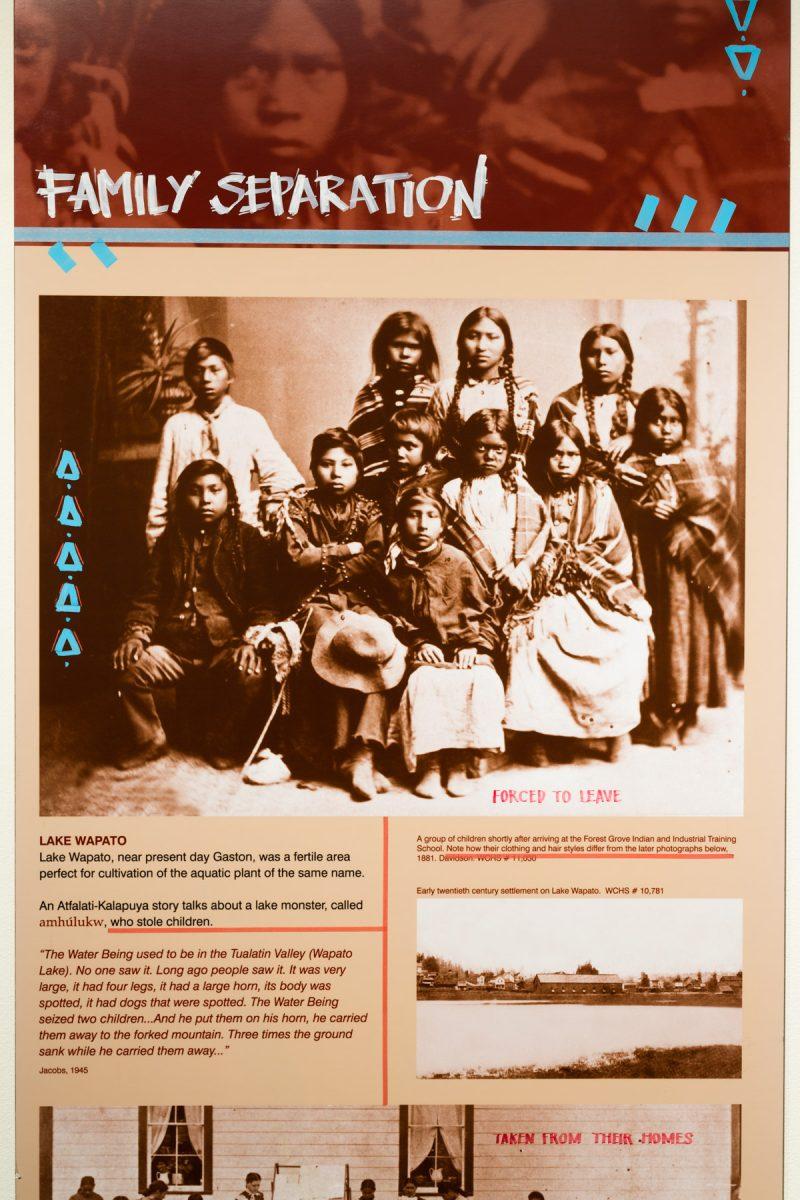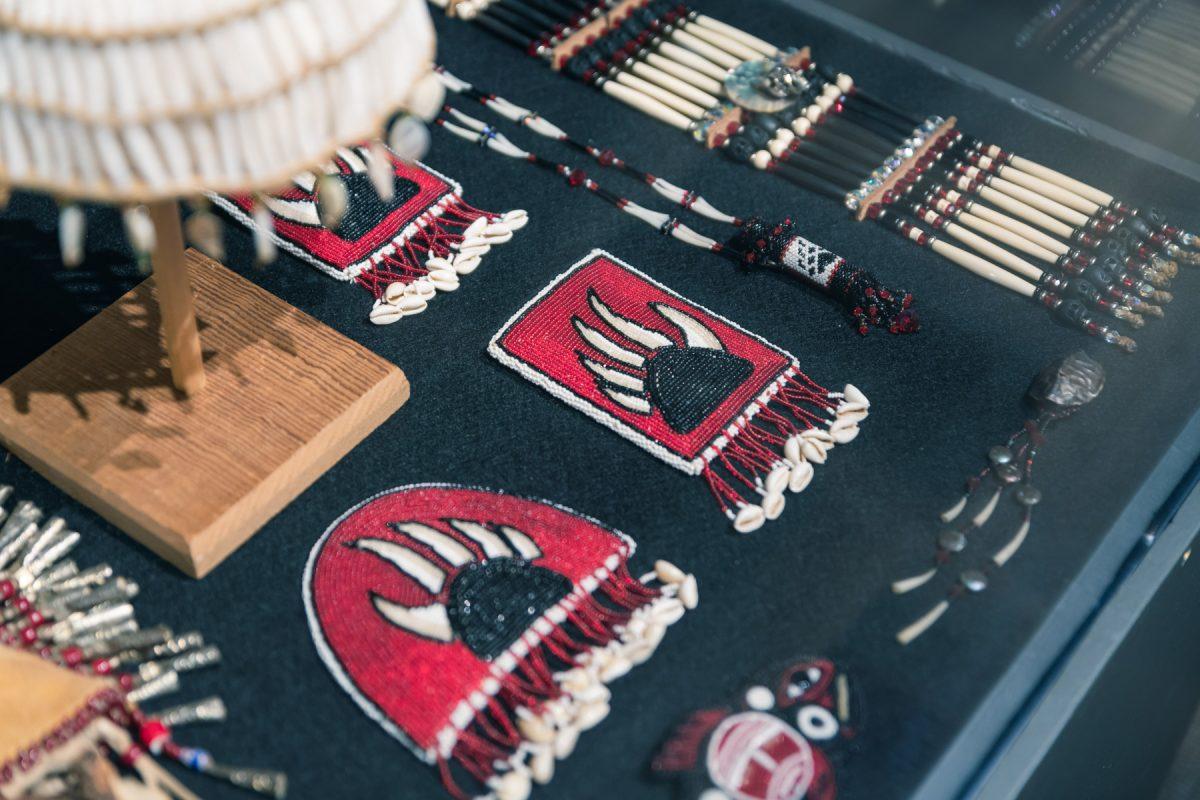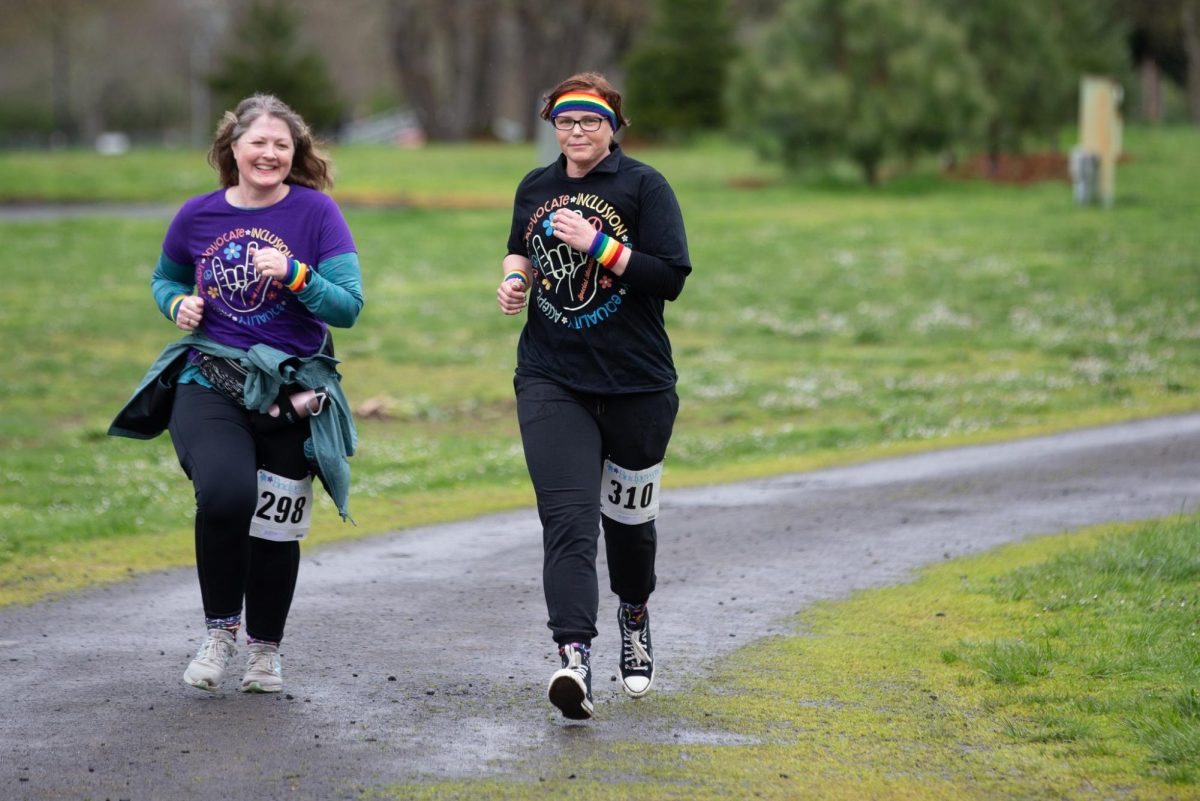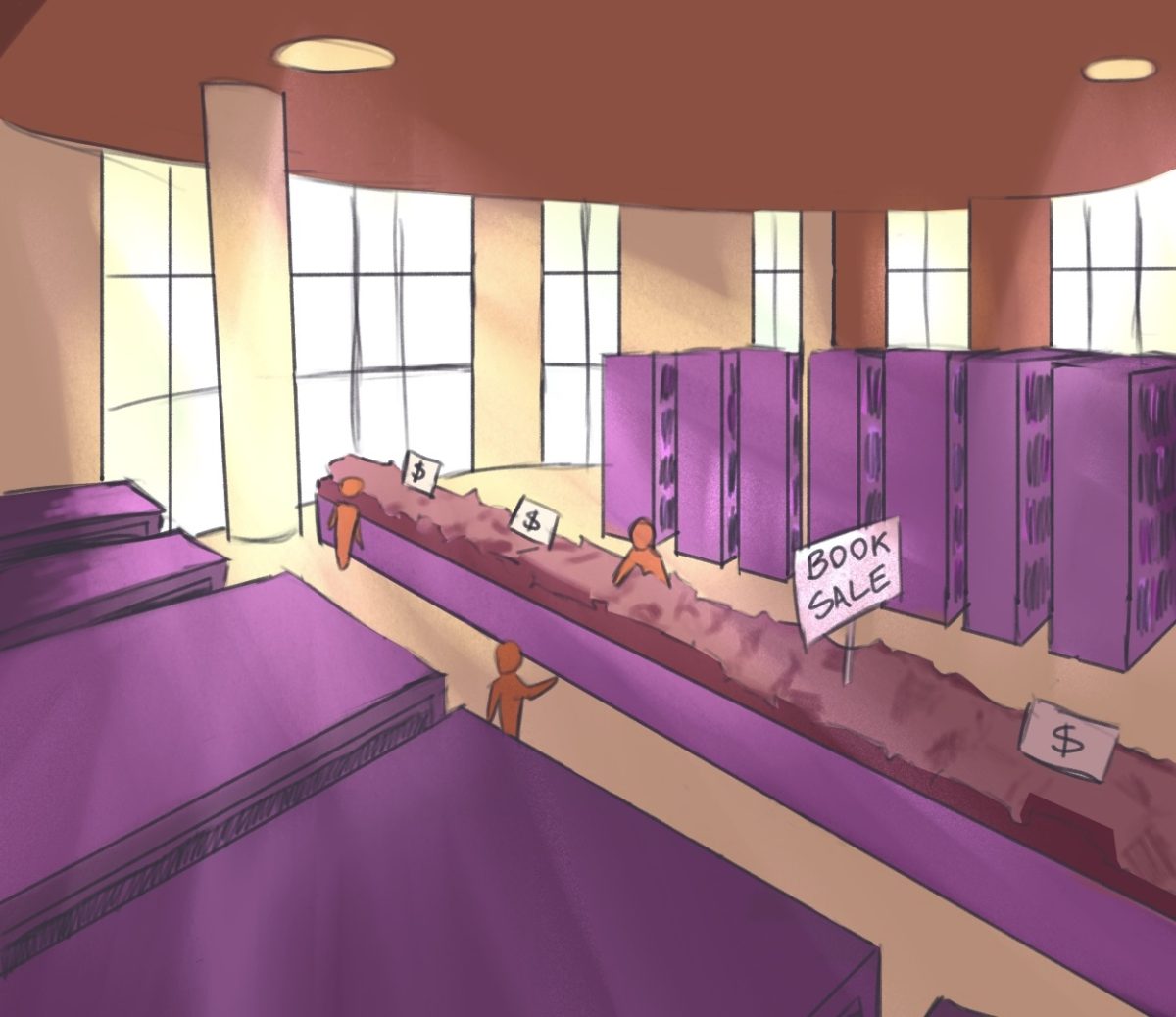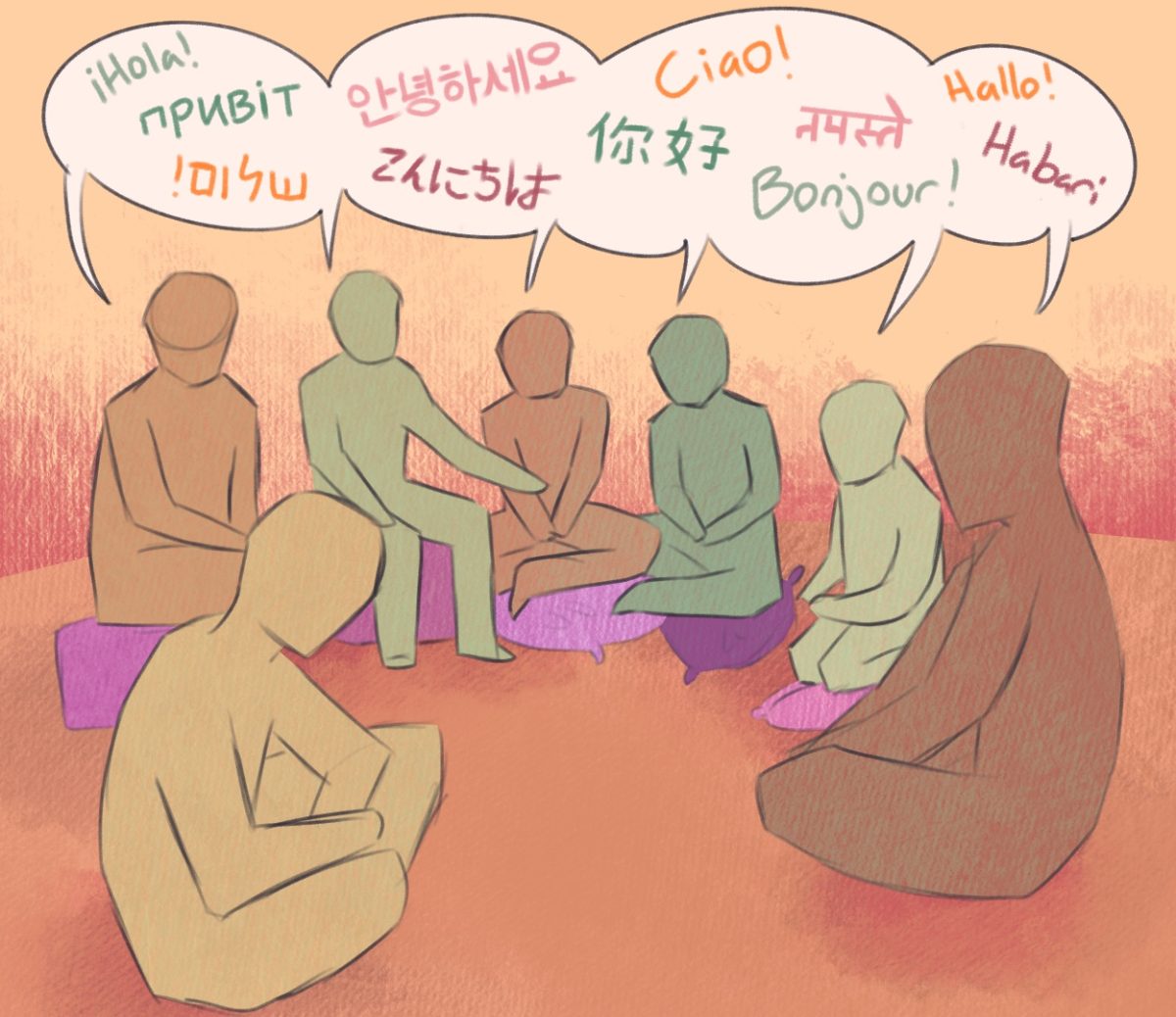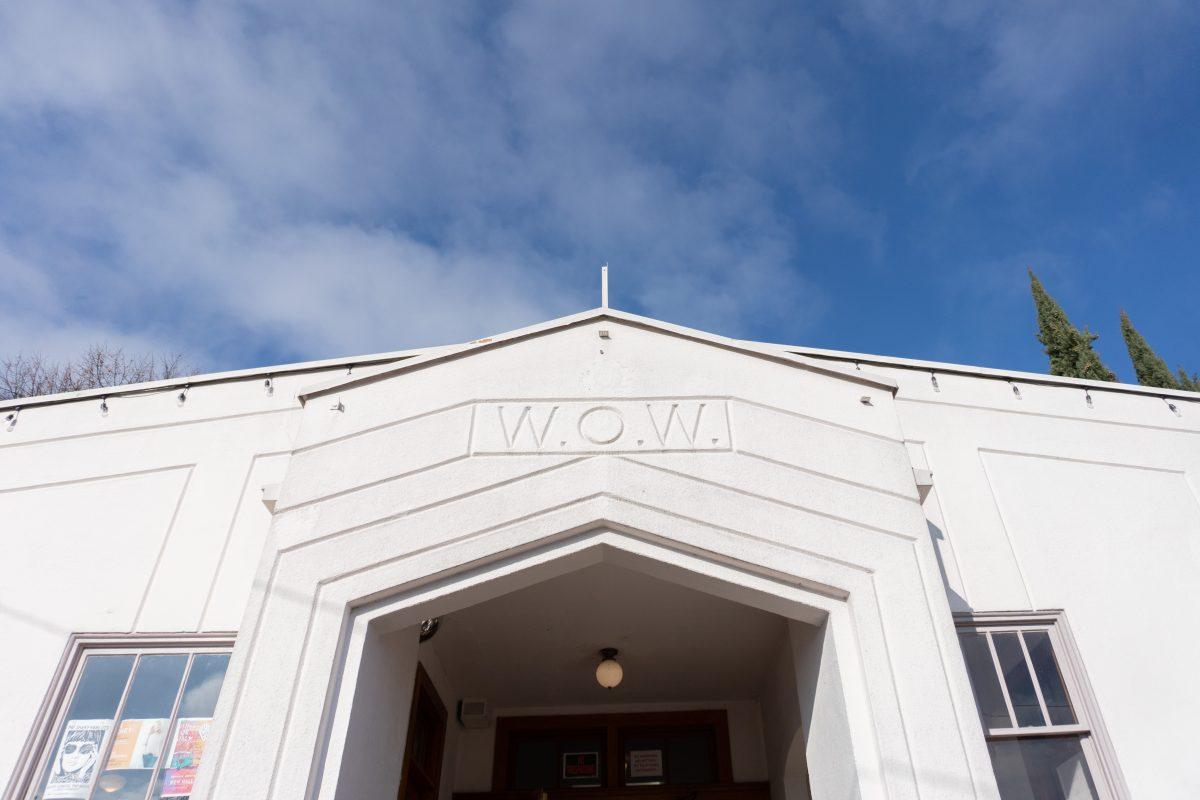On the week of May 9, dozens of red, white and black signs reading “This ISKalapuyan Land” were distributed around the UO campus as part of a broader effort to reclaim space for UO’s Indigenous community. The signs, distributed by the Department of Native American and Indigenous Studies, were based on a 2019 museum exhibition of the same name designed to feature Indigenous artists and creatives while upending problematic narratives around Indigenous history and identity.
The University of Oregon exists on Kalapuya Ilihi, the traditional homeland of the southern Kalapuya people. Treaties between 1851 and 1855 by the U.S. government stole this land from the Kalapuya and forcibly removed them to the Coast Reservation in western Oregon; four years later, Congress mandated Oregon’s colonizers to establish a public university. Today, Kalapuya descendants are primarily citizens of the Confederated Tribes of Grand Ronde and the Confederated Tribes of Siletz Indians.
Steph Littlebird is an Indigenous artist and a registered member of the Confederated Tribes of Grand Ronde, as well as the guest curator for the “This IS Kalapuyan Land” exhibit. Littlebird said their upbringing in rural Oregon inspired them to pursue their art.
“I’m an Indigenous person who grew up in Oregon in a little town called Banks, and art became my way to sort of escape the reality of living in a very rural white environment,” Littlebird said. “Most of the work I do is about my culture and community as an Indigenous person.”
When Littlebird took on the project in 2019, the museum hosting it was undergoing a series of radical changes. Five Oaks Museum, formerly known as the Washington County Museum, came under new leadership in hopes of improving transparency and its ethics policies. It also decided to dramatically revamp its exhibits to “serve the community more so than white supremacy,” according to Littlebird.
Littlebird was asked to reimagine the exhibition “This Kalapuyan Land” and was puzzled by its name, which felt disembodied. She added “IS” to the title to emphasize the problematic nature of treating Indigenous cultures as past-tense or extinct.
Many of the old exhibition’s panels were also outdated or problematic, including outdated scientific figures, pioneer narratives and misleading information about Indigenous culture and identity. Littlebird worked with Grand Ronde historian Dr. David Lewis to “correct” the panels, visibly marking misinformation out with a red Sharpie.
“I’ve had a lot of people ask me: ‘Why not just use brand new panels instead of correcting the old ones?’ Because then you don’t see that there was an error, that this institution made a mistake,” Littlebird said. “It’s important because so many institutions are grappling with these same questions around the country.”
“This IS Kalapuyan Land” also featured a host of contemporary Indigenous artwork. Littlebird was tasked with tracking down Indigenous creatives and artists, many of whom lacked access to the digital or financial resources typically necessary to feature their work in a museum. In some cases, Littlebird even offered to transport their work to the museum in her car. She said it goes to show how much harder it is for Indigenous artists to feature their work than white ones.
Littlebird said if educational institutions like UO could learn anything from projects like “This IS Kalapuyan Land,” it’s ensuring increased Indigenous visibility. Growing up in the Oregon public school system, she was falsely taught that her tribe was extinct.
“It’s about inviting discourse, providing opportunities for their Indigenous students and educators to engage in conversations and challenge these pioneer narratives,” Littlebird said. “We’ve been made invisible in many ways, and growing up in Oregon and going to school here drills the pioneer, Oregon Trail shit into your head from day one. Think about what that does to an Indigenous person’s psyche!”
Currently, Littlebird is wrapping up several publishing projects, including illustrating the children’s book “My Powerful Hair” written by New York Times-bestselling Indigenous author Carole Lindstrom. “This IS Kalapuyan Land” is available as an online exhibition and will be re-exhibited in 2023 at Portland’s Pittock Mansion with a brand new collection of contemporary artwork.
Image courtesy of Mario Gallucci.


